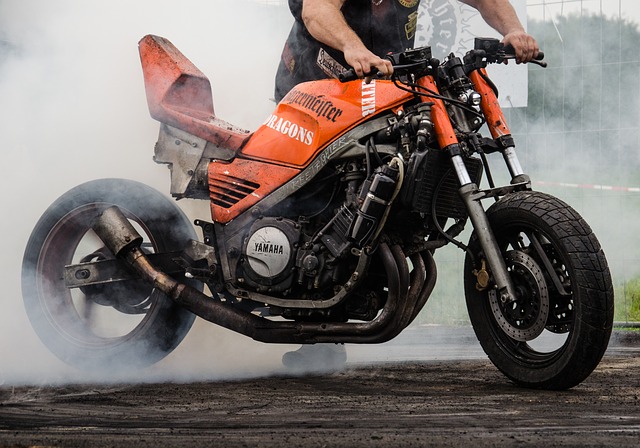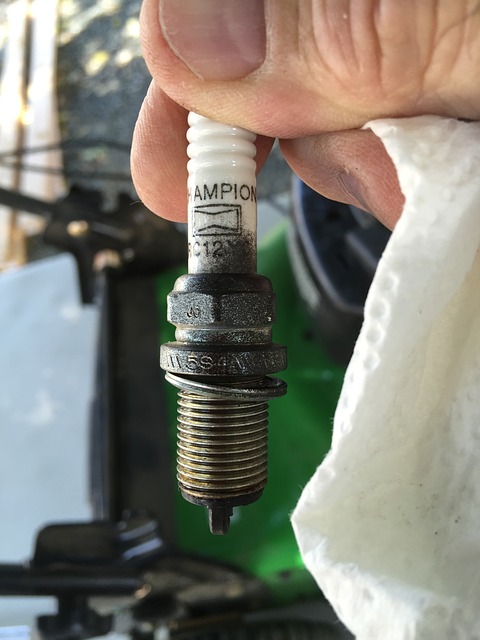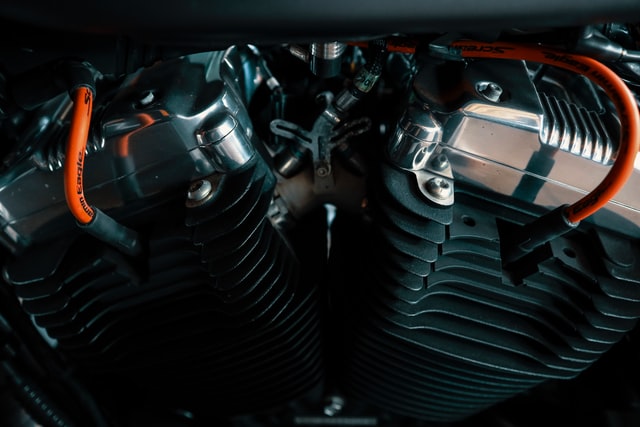Many of us have experienced that sinking feeling of turning the key and the motorcycle engine failing to start normally.
Motorcycle engine problems rarely come unannounced, especially those machines that are well-maintained and looked after. For uncared machines, it would be setting very high expectations if one considers it to offer life-long trouble-free service.
A motorcycle may appear perfect on one day and without warning starts acting weird and in the worst case refuses to start on another. Mood swings? Definitely not, after all, it’s a machine and most modern machines are a combination of many mechanical components and electronic aids.
Problems will occur sooner or later for any motorcycle engine during its life cycle without exception as it is the most hardworking piece of hardware that has to take on tremendous amounts of stress — be it from the rider, its working environment or unusual situations.
And then you have problems associated with wear and tear of components and maintenance or the lack of it.
Usually, the erratic behaviour of the motorcycle can happen if it has been stored for a while and not used. Static machines can succumb to the rigours of nature if not stored well. Fuel becomes stale and loses its igniting qualities or gum up and clog jets inside the carburettor. A clogged fuel filter will prevent movement of fuel to the carburettor or fuel injector. Batter
Mind you, some of the problems are easy to identify and are generally easy fixes. But, there will be complex issues that may require professional tools and expertise.
We look at some of the problems associated with non-starting or faltering engines and suggest how to resolve them.
#1: The motorcycle will not start despite having a good battery and fuel

Many times a motorcycle engine will not respond even when the key is turned on and the instrument panel lights up.
If the battery offers a good crank, fuel is fresh and supplies to the carburettor/injector are normal, yet there’s no response from the engine, then we are looking at several things.
For more info, here is our detailed post on motorcycle starting problems despite a good battery.
Solution:
There are a few areas to check out like fuse, starter motor relay/solenoid, starter motor and the battery terminals.
The most likely cause could be a malfunctioning starter motor solenoid, or a worn out starter motor brush. Replacing the starter motor with the solenoid is the ideal solution. Also, check the battery terminals and tighten if required. If battery posts and cable terminals are oxidised or dirty, they will need to be cleaned thoroughly as
#2: Engine was working fine but will not fire now

This scenario points to a fuel supply problem more than an electrical or mechanical issue. Unless you have run out of fuel, it could be either some sort of disruption to supplies or continuity.
Fuel lock can happen in hot and dusty situations and actually is an easy fix.
Inside every fuel tank there’s a ventilator pipe. If this gets choked, fumes inside the fuel tank cause a vapour lock. When this happens, fuel will not pass through to the petcock or fuel pump.
Solution:
Open the fuel cap and locate the mouth of the vent pipe. Use a probe or hard flexible wire to clean the passage. You may use an anti-rust spray like WD40 to release rust. Also worth checking is the tiny breather hole on the fuel tank cap. Use a fine wire or needle to clean it. Be careful not to rupture or damage the rubber gasket.
#3: Motorcycle cranks and only idles, but it won’t rev

There could be several reasons for such a performance related issue. The problem could be individual mechanical, electrical or a combination of several.
Fuel starvation due to a blocked jet is mostly likely out here and is generally a quick fix. Stale fuel inside a petrol tank has a tendency to gum and will block carburettor jets or injector nozzles.
If it’s not fuel then the problem could lie in the electrical system. This is somewhat pronounced in older motorcycles due to the type of electric generators and ignition systems used. Vintage and classic motorcycles came with low voltage output 6v dynamos and contact breaker systems for ignition. These were mostly unreliable and would fail without any warning.
Post 70s motorcycles have highly efficient electric generators or alternators with strong non-neodymium magnets and contactless electronic ignition. They are able to produce consistent levels of current and seldom fail during the lifetime of the motorcycle.
Depending on the job requirements of the specific model of the motorcycle the internal design of a stator can be simple with one coil or complex with more than one.
There’s a minimum current required to start the engine and the load demand goes up when the throttle is pushed. If demand current is not being produced, then the engine will not rev.
In most modern motorcycles, alternators are designed with individual coils for starting the engine, charging battery and powering lights.
Some motorcycles (smaller displacement) will use the output of a single coil for this. In bigger displacement or multi cylinder motorcycle engines, the ignition module may be a little more complicated as it involves more than one coil for the job. For tech-savvy individuals, these ignition coils are connected through a network inside the generator and the output is controlled by the ECU.
Solution:
Checking the condition of the alternator/generator requires specialist skills, tools and processes. There are specialists who can rewind/seal the armature coils. Refurbished alternators are also available and will do the job well.
It’s also worth checking whether there’s a sealing problem with the stator/rotor cover as moisture can seriously impact the resistance of the coils.
#4: Engine cranks, but there’s no spark on the plugs

Such a situation obviously relates to an electrical, electronic or wiring issue or even a simple fouled spark plug.
The symptoms become evident when you try to start the engine that will spin but not fire. If you can hear the fuel pump ticking in fuel injected machines, that’s a sign that your wiring is not compromised.
However, it begins to get complicated if you have to check the ignition pickup sensor or the ECU unit.
Solution:
A step-by-step fault investigation is required. The simplest DIY job would be to first remove the spark plugs and check for current by cranking the engine. Check the spark plug and clean it if required. Better replace an old one with a new one.
If there’s still no current coming, then the next part to check would be the high tension (HT) coil wire lead. Remove plug cap and inspect the condition of the wire for cracks and oxidation. If these signs are there, you may need to replace the wire. Before you decide to change the HT wire, it would be wise to also check the workings of the HT coil. A good starting point would be the connectors.
If the problem is not solved, then professional diagnostic help will be required to locate and solve the problem elsewhere like the ignition pickup sensor or the ECU unit.
#5: Engine starts, but stutters and makes funny noises

Even a seasoned motorcycle mechanic will agree that locating carburettor air leaks, also known as vacuum leaks can be bewildering in motorcycles with more than one carburettor.
You have to be mentally and physically prepared for a gruelling task that could involve a complicated process of dismantling the fuel set-up, replacing the faulty component and re-fitting it properly. And that’s when you know where the fault is! Otherwise, it’s trial and error through observation.
Air intake leaks around the carburettor are found at the throttle body (base) and they go largely undetected.
However, there are tell-tale signs when the engine has an air intake leak. To be absolutely sure, start the engine and let it idle. Once warmed up, if idling appears more than normal then you can be sure that the mix of air-to-fuel ratio has changed. It means the mixture is too lean and this creates performance imbalance and this means there’s extra air coming in from somewhere.
The second sign of a manifold leak is the engine will tend to ‘pop’ or hesitate or emit a hissing noise when revved. Lean mixture will certainly prompt premature ignition or pre-ignition, resulting in backfiring through the exhaust.
Solution:
Use a vacuum gauge to determine the “too-lean” condition. Remember, leaner fuel and air mixture is more volatile than the optimum mixture. If the manifold appears to be the source of leak, then it has to be replaced with a new one. For this particular part replacement, always avoid using pre-owned stuff.
#6: Engine idles fine, but stalls at higher revs

Most of the modern motorcycle engines have been endowed with a host of modern technologies for enhanced performance besides meeting mandated legal targets — especially emissions.
As a result, you have a host of sensors that send information to the electronic control unit (ECU) that manages everything from fuel management, ignition advance/retard, valve timing among others. Although stalling does not damage the motorcycle, the overdose of sensors and equipment will cause annoyance in the form of stalling.
Air idle control unit (AIC) adjusts the engine revs by opening and closing the bypass set-up inside the throttle body. A malfunctioning AIC will surely impact the idling performance of the engine. The idle air bypass solenoid will shut off airflow if sensors detect unusual or excessive airflow inside the manifold.
Another component is the valve operated exhaust gas recirculation (EGR) unit. A stuck valve means there’s a blockage or leak in the vacuum system. A defective EGR can cause an engine to idle roughly.
Solution:
A diagnostic kit will be able detect the abnormalities or deviations and most of them can be reset, provided supporting hardware is in working as it should.
